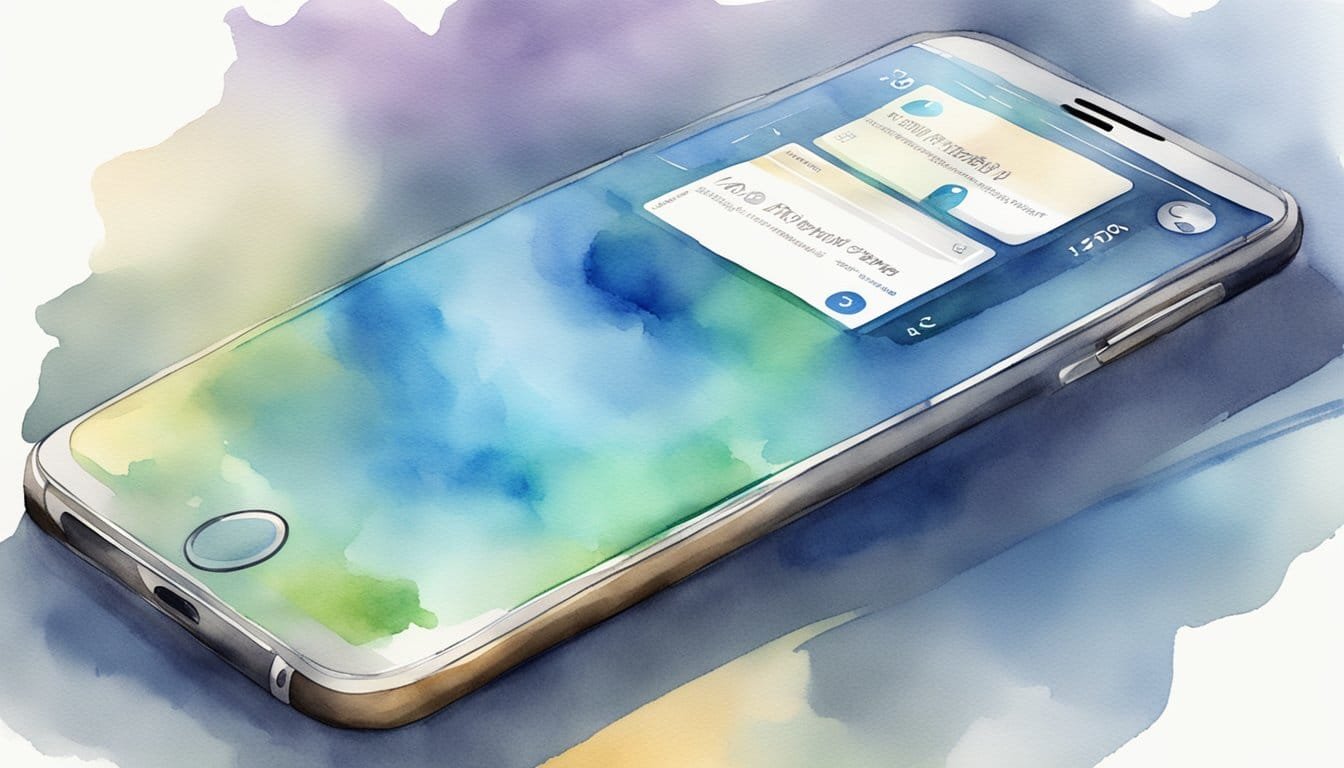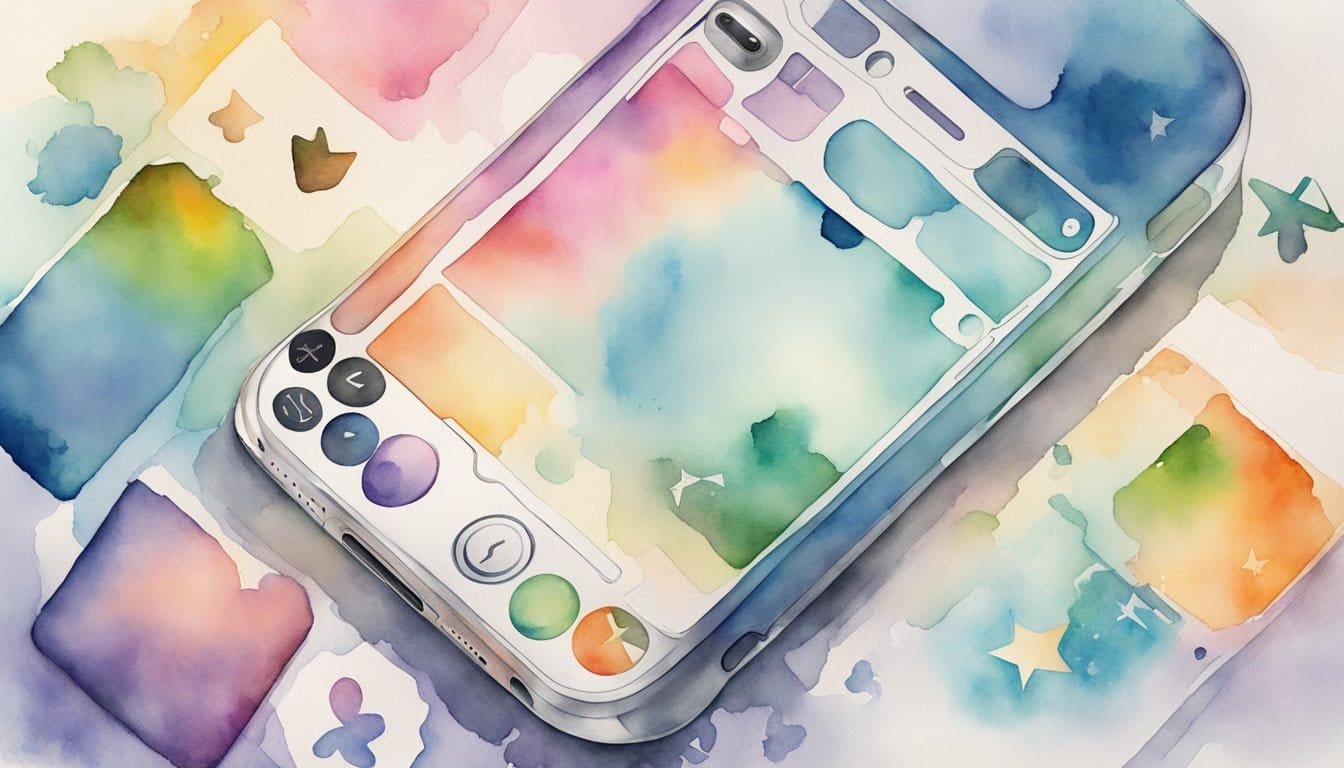Origins and Development
The iPhone’s inception was a blend of visionary ideation and collaborative innovation, spearheaded by Apple Inc. and its co-founder, Steve Jobs.
It not only marked the birth of a device but also the dawn of a new era in the smartphone industry.
Conceptualization by Steve Jobs and Apple Inc.
Apple Inc., with Steve Jobs at the helm, conceptualized the iPhone as a revolutionary product that would combine an iPod, a phone, and an Internet communicator.
This vision was famously unveiled at the Macworld Convention in 2007, where Jobs described the iPhone as a product that would change the world.
Collaborative Efforts and Project Purple
The development of the iPhone was not a solitary endeavor; it was a secretive initiative lovingly codenamed “Project Purple.” Apple’s top designers, programmers, and engineers worked in a dedicated wing, with Jobs overseeing the entire operation to ensure the project stayed true to his original vision of making a user-friendly and revolutionary product.
Key Contributors: Tony Fadell, Scott Forstall, and Jonathan Ive
Integral to the iPhone’s development were key contributors such as Tony Fadell, dubbed “the father of the iPod,” who played a significant role in its creation. Scott Forstall was responsible for the software, leading the team that developed the operating system, while Jonathan Ive, Apple’s design maestro, was the genius behind the iPhone’s iconic aesthetic.
Each brought a unique set of skills to the project, contributing to the overall success and innovative design of the final product.
Product Launch and Industry Impact

When Steve Jobs unveiled the first iPhone on January 9, 2007, at Macworld, it heralded a new era in technology and mobile communication.
This event set Apple on a path to dominate the smartphone market, reshaping the industry and how consumers interact with technology.
Debut at Macworld and Public Reception
The debut of the iPhone at Macworld was met with astonishment and widespread media coverage.
Visitors witnessed a technology revolution as Jobs demonstrated the phone’s intuitive touch interface and range of features via video.
The first iPhone was a bold departure from existing smartphones, incorporating a full-browser experience and functioning as an iPod.
Its launch transformed Apple Stores into hubs of excitement and set the stage for unprecedented sales in the United States and Europe.
The Effect on Mobile Phone and Technology Markets
Post-launch, the atmosphere in mobile phone and technology markets was electric.
The emergence of the iPhone 3G marked an evolution in speed and connectivity, bolstering consumer appetite and driving further sales.
The subsequent opening of the App Store catalyzed a seismic shift in software distribution, creating an ecosystem where developers could thrive and users could personalize their experience like never before.
Competitive Response from Blackberry, Samsung, and Motorola
Blackberry, once the leader in enterprise mobile devices, found itself playing catch-up as the iPhone’s touch interface made traditional keypads seem antiquated. Samsung and Motorola felt the pressure too; these powerhouses were compelled to innovate rapidly, eventually leading to market diversification and the introduction of new products such as Samsung’s Galaxy series.
This competition intensified with each iPhone iteration, especially with the iPhone 4’s introduction of a sleek, flat design and the iPhone 4S’s unveiling of Siri, setting a new standard in mobile AI assistants.
Technological Advancements and Hardware Features

The invention of the iPhone brought together the functionality of a PDA, iPod, and cellular phone, revolutionizing the way people communicate and access information.
This section delves into the hardware and technological advancements that made the iPhone a game-changing device in the world of mobile technology.
Integration of PDA, iPod, and Cellular Technology
The iPhone was a leap forward in integrating PDA-like functionalities, an iPod’s entertainment capabilities, and cellular technology into a single device.
Multiple functions that were once performed by separate gadgets were unified into the iPhone, making it a comprehensive mobile computer that fits in your pocket.
It offered users the convenience of managing their calendars, playing their favorite tunes, and making calls all from one place.
Advances in Touchscreen and Camera Technologies
The iPhone’s multi-touch touchscreen redefined user interaction with mobile phones by allowing gestures and swipes to navigate through content.
This significant advance made keyboards and styluses obsolete for most users.
Additionally, the iPhone’s camera underwent significant improvements, evolving from a simple photo-taking tool in the early models to a sophisticated, high-resolution camera capable of shooting 4K video in later models like the iPhone 6 and iPhone X.
Corning’s Gorilla Glass and iPhone Durability
Durability was also a key feature for the iPhone, with Corning’s Gorilla Glass providing the necessary resilience to protect the device’s sensitive touchscreen.
Over the years, this glass technology has been a staple for the iPhone ensuring that the delicate display can withstand the rigors of daily use.
It became particularly pivotal in protecting the expansive screen of the iPhone 8, which featured glass on both the front and back.
These components, coupled with technology such as facial recognition, accelerometer, and GPS, made each iteration of the iPhone not just a phone, but a versatile tool that continues to have an indelible impact on the mobile phone industry.
Software Innovations and User Experience

Apple’s iPhone is not just a piece of hardware; its software advances, particularly iOS and the App Store, have revolutionized the mobile experience.
They’ve crafted a user interface that’s intuitive and secure, while continuously introducing innovative features like Siri and stringent privacy measures.
iOS Development and App Store Ecosystem
When the iPhone burst onto the scene, it brought with it iOS, an operating system that set the standard for mobile interfaces. iOS was built to be both user-friendly and powerful, characteristics that have enticed millions of users worldwide.
The introduction of the App Store, a groundbreaking platform part of iTunes, transformed the iPhone into more than just a phone; it became a dynamic hub for third-party apps.
Never before had a single device provided users access to such a wide array of functions and entertainment options at their fingertips.
Introduction of Siri and Voice-Activated Features
The launch of the iPhone 4s was made iconic with the debut of Siri, an intelligent personal assistant.
With Siri, Apple pioneered voice-activated features in smartphones, allowing users to make calls, send texts, and open apps through voice commands.
This innovation cemented the iPhone’s reputation as a device that could continually push the boundaries of user interaction.
Privacy and Security in the iPhone Operating System
Privacy and security are paramount in the digital age, and Apple has positioned them as core aspects of the iPhone experience.
The iOS operating system includes advanced security features to protect user data, challenging the industry to prioritize user privacy in a world of ubiquitous technology.
Robust encryption and App Store review processes aim to ensure that user information remains secure, whether it’s being used in-built features or third-party applications.
Cultural Significance and Legacy

When the iPhone burst onto the scene, it was more than just a new gadget—it was a cultural phenomenon.
It redefined what a smartphone could be and shifted the landscape of media and gaming entirely.
The iPhone’s Role in Redefining Modern Smartphones
The launch of the iPhone marked a seismic shift in phone design and functionality.
With its introduction, the iPhone effectively set the benchmark for modern smartphones.
By integrating a music player, internet browser, and video player in one sleek device, it transformed the smartphone from a simple communication tool into an indispensable lifestyle companion.
Emphasizing user experience, the iPhone led to an ecosystem of apps that have since become central to cultural practices—from navigating the streets of Paris to ordering food with a tap.
Influence on Media Consumption and Mobile Gaming
Media consumption took a dramatic turn as the iPhone enabled consumers to access a myriad of content, from YouTube videos to streaming services, anytime and anywhere. Mobile gaming too became mainstream, with games that leveraged the iPhone’s tech to provide engaging experiences.
The iPhone didn’t just change the game; it virtually created a new playground.
With the release of devices like the iPhone SE and the iPad, Apple, under the guidance of Tim Cook, continued to shape how entertainment is consumed and offered new ways for people to connect.




